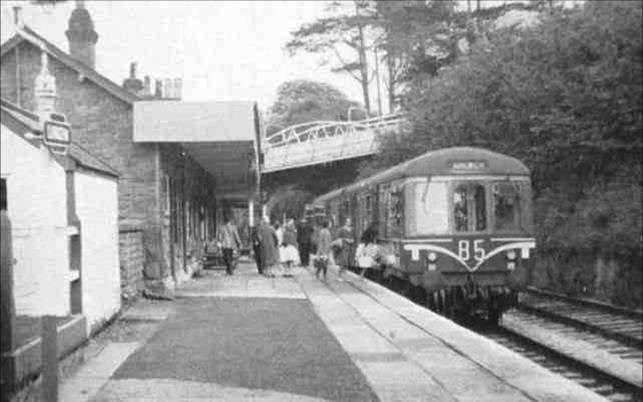Thursday 20 Jan 2011
STUDY ON REOPENING AMLWCH RAIL LINE BEGINS
- Region & Route:
- | Wales & Western: Wales & Borders
- | Wales & Western
A feasibility study to examine the prospect of restoring passenger services on the disused branch line between Llangefni and Gaerwen has started. Working with the Welsh Assembly Government and the Isle of Anglesey Council, Network Rail will begin the first stage of the study next week by examining the surrounding habitat of the abandoned line.
The Amlwch branch line was closed to passenger traffic in 1964, but remained in use for chemical freight until the early 1990s. Today, the route is heavily overgrown with vegetation since it was left disused.
As part of the study, the overgrown vegetation has to be removed to allow ecologists to study the natural environment along the branch line, so that rare plants and species can be identified and protected if the plan to re-open the line does go ahead.
Engineers will also be looking at 31 bridge and culverts, 4.5miles of track and earthworks as well as examine the feasibility of refurbishing the Llangefni station building and its disused platform.
Mike Gallop, principal programme sponsor, Network Rail said: “The Amlwch branch line has been disused for nearly two decades and bringing it back to passenger use will be tough. Today we are taking that first step, working together with the Welsh Assembly Government and the council, to see if it is possible to meet the aspiration of restoring services the line.
“For passenger trains to run on the line again, we may need to modernise the existing signalling system, repair and replace the disused track, bridges and culverts, which are no longer fit for purpose. The study will be vital to help us examine the feasibility and identify a cost-effective solution.”
The study is commissioned by Welsh Assembly Government to investigate the business case of introducing regular passenger services between Llangefni and Bangor.
If the scheme is delivered, it will improve rail connectivity to Anglesey and Bangor and will also encourage greater use of the rail network by linking Llangefni with the national rail network, reducing road congestions over the Menai Straits.
Notes to editors
To minimise any environmental impact, the overgrown vegetation will be carefully removed within the four foot boundary of the track using special tools. Work will also be carried out under the supervision of a specialist ecologist and before bird nesting season.
The line was closed to passenger traffic in 1964, but remained in use for chemical freight from the Octel plant at Amlwch until the early 1990s. An additional new siding was also being built at Rhosgoch by Shell UK in the 1970s to transport steel and other materials needed to build a vast tank farm.
The farm was a storage facility for the oil which was pumped direct to Stanlow refinery in Cheshire via a 127 km underground pipeline. The tank farm closed in the early 1990s due to the decline of using very large crude oil tankers.
The last train from the Octel plant ran in 1993 due to the conversion to road haulage and the plant eventually closed in 2003. Passenger specials have run on many occasions, the last being in 1993. Since that time the line has been mothballed for future re-use.
Contact information
Passengers / community members
Network Rail national helpline
03457 11 41 41
Latest travel advice
Please visit National Rail Enquiries
Journalists
Network Rail press office -Western route
MediaRelationsWestern@networkrail.co.uk
About Network Rail
We own, operate and develop Britain's railway infrastructure; that's 20,000 miles of track, 30,000 bridges, tunnels and viaducts and the thousands of signals, level crossings and stations. We run 20 of the UK's largest stations while all the others, over 2,500, are run by the country's train operating companies.
Usually, there are almost five million journeys made in the UK and over 600 freight trains run on the network. People depend on Britain's railway for their daily commute, to visit friends and loved ones and to get them home safe every day. Our role is to deliver a safe and reliable railway, so we carefully manage and deliver thousands of projects every year that form part of the multi-billion pound Railway Upgrade Plan, to grow and expand the nation's railway network to respond to the tremendous growth and demand the railway has experienced - a doubling of passenger journeys over the past 20 years.
Follow us on Twitter: @networkrail
Visit our online newsroom: www.networkrailmediacentre.co.uk

